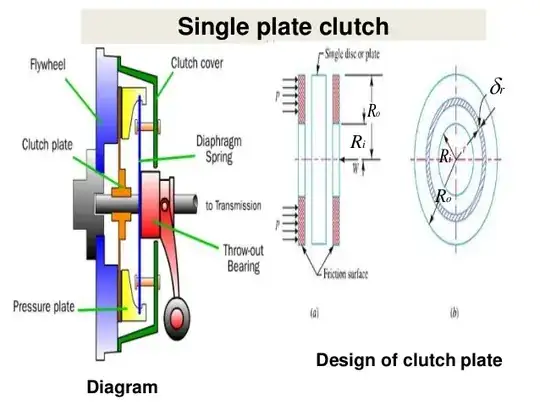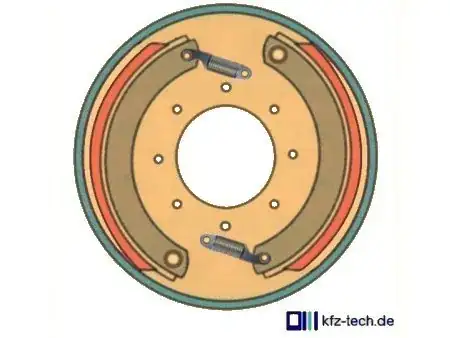The clutch disengages the engine from the gearbox in a manual-transmission car, enabling the driver to change gear.
Clutch
In general, a clutch is a part which allows to connect / disconnect two shafts also while they are rotating.
The most simple clutch consists of to discs, each firmly attached to one shaft. Press them together, and the friction between them allows to transfer torque from the one shaft to the other. Pull them apart, and the shafts aren't connected any more, and each shaft can rotate at its own RPM.
The important point is that the clutch discs can slip until both shafts have the same RPM. This makes them different from gear wheels, which can also connect/disconnect shafts, but already needs the shafts to have the right RPM ratio.
A typical clutch in a car is not much more that that two disks:
The orange clutch plate is connected to the shaft to the gear box, the blue is the flywheel, connected to the crank shaft.
Normally, the yellow pressure plate is pressed (due to the diaphragm spring) to the clutch plate, and also presses this to the fly wheel. Motor and transmission are connected.
If you press the clutch pedal, the inner part of the spring is pushed left, which causes the outer part to move to the right. This also moves the pressure plate to the left, releasing the clutch plate. The motor is not connected to the transmission.
It is not necessary that the left disc actually is the flywheel, but as the flywheel already has about the size needed, it is usually used as part of the clutch.
A few more words about the clutch in the car:
If you disengage a gear, you put lots of wear on the teeth of the gear wheels, when there's still torque applied to them. So the clutch removes this torque, and allows to disengage the gear gently.
If you engage the new gear, the shaft between gearbox and clutch still has not the right RPM matching the gear and the RPM of the shaft to the wheels. Therefore, each gear has some kind of "mini-clutch" called synchronisation ring, which brings that shaft to the right RPM (and correct position). But this clutch is only for that small shaft and is too small to bring the entire motor to the right RPM. Also, it is only used to match the RPM, not to transfer the torque while driving.
Just to mention other types of clutches:
Most scooters have this kind of clutch, which looks similar to a drum brake (but e.g. without piston)
The entire reddish part is connected to the motor side and rotates counter-clock wise. When the RPM is increases, the orange parts are pulled outwards due to centrifugal force and so are pressed against the green drum, which is connected to the wheel. The only reason for that clutch is to disconnect wheel and motor while idling.


